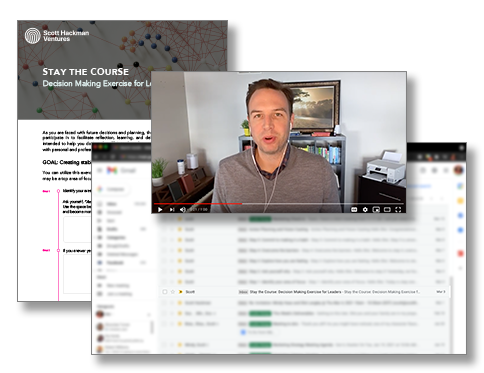Providing effective feedback is often challenging for many leaders, especially when an individual is faced with having an open and honest conversation regarding something that may feel negative at the time. Typically this is driven by the desire not to hurt a team member’s feelings or damage the relationship. While these are natural fears, in the long-run, avoiding these critical conversations and constructive criticism, in general, has been proven to cause more of a divide as well as a less productive work environment.
The ability to properly articulate feedback is an essential leadership skill. Adopting radical candor principles in the workplace can help teams have hard conversations.
What is radical candor? According to expert Kim Scott, author of the book, Radical Candor, it’s caring personally and challenging directly, not brutal honesty. The whole point of radical candor is that it IS possible to integrate both care and challenge at the same time.
Kim Scott offers some practical insights into how leaders can implement a distinct balance between care personally and challenge directly. The care personally component places emphasis on developing real human relationships with team members, while the challenge directly piece serves as a reminder that it’s part of your job as a leader to have these hard conversations and to say whatever it is that needs to be said. The combination of both of these components guides specific conversations with team members, especially when providing feedback as well as receiving it.
Here’s the top five ways we believe that you can begin introducing effective feedback into the workplace using radical candor principles:
- Shift your perspective on feedback – Rather than viewing feedback as entirely negative, remember the importance of providing it to your team member(s). In fact, you are doing a disservice by NOT providing them with the constructive feedback in the workplace that they deserve. Kim Scott uses the term Ruinness Empathy4 to describe this dynamic. Essentially, this means that when leaders refuse to share feedback properly they directly hinder the growth that individuals need to succeed both independently and as a contributing member of an organization.
- Be willing to seek out constructive feedback, first – Receiving feedback as a leader isn’t always easy, however, it’s essential to gain trust with your team. That’s why one of the first things to do is solicit constructive feedback. Ask specific members to provide you with critiques regarding your own role. This practice a) models how to receive feedback well and b) sets the standard that constructive feedback is common practice on the team. In Kim Scott’s terms, don’t dish it out, until you prove you can take it.
- Utilizing a model for delivery – The “how” of starting these constructive conversations can oftentimes be the most challenging part. That’s why using a model for proper delivery will help you prepare for the conversation and execute it effectively. For the delivery portion, we turn to the Harvard Business Review and their article How to Give Feedback People Can Actually Use. They recommend some clear and concise guidelines for delivery. The first being, big-picture focused, “It takes a strategic view of what the leader is doing effectively and less effectively today, and what they might continue or change to achieve the organization’s objectives in the future.” Linking back to organizational alignment is a recurring theme within this specific delivery model.
- Do it in person, if possible and make it timely – While an in-person meeting is not always possible, do your best to have direct interaction with the individual. If not in person, consider utilizing a video call. The ability to see the individual as you speak to them allows you to best gauge their body language, which is an essential part of Kim Scott’s approach. She encourages the leader to measure the listener’s ear and determine where you landed on the scale of care personally and challenge directly. Once you identify the effectiveness you can adjust accordingly. Additionally, the best feedback is given as soon as possible and it’s recommended to aim to articulate your point(s) in about 3-5 minutes. Waiting until the next formal opportunity will only cause lag time for you to become fuzzy on the details of the issue and as a result, the team member will be left feeling confused and insecure.
- Be consistent and practice – Remember, the ability to give and receive feedback is a learned skill. Give yourself grace, time, and tap into the right tools that provide you the guidance you need. As with anything, consistency is key, and the more you implement adopting radical candor principles into your leadership style, the more natural it will become. As you begin to put this into practice, your team members will be encouraged to do the same. If someone comes to you with an issue regarding another team member, be sure to inspire them to practice receiving and providing feedback with that individual in an effort to resolve the issue at hand. Before you know it, your team members will be equipped to have the hard conversations.
We can help
Are you looking to improve your culture of candor and how you give and receive feedback? We can provide coaching to guide you in the right direction. Simply fill out THIS FORM to book a free consultation with Mindy Haas for Leadership Coaching.


Scott Hackman is the Founder and CVO of Scott Hackman Ventures. He has over 15 years of experience in business advising, coaching, and leading growth through transitions.
Meet Scott.



